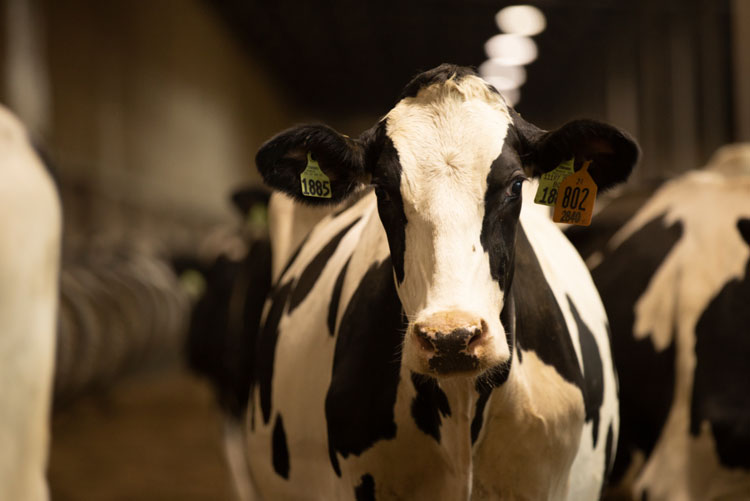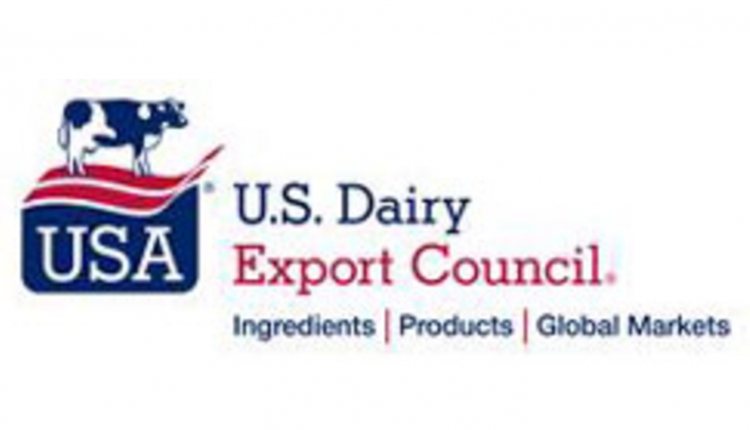The information below has been supplied by dairy marketers and other industry organizations. It has not been edited, verified or endorsed by Hoard's Dairyman.

When producers talk about hypocalcemia today, the focus has shifted to subclinical hypocalcemia. Unlike clinical milk fever, it’s a disease that doesn’t show any visible signs.
“You can’t determine the severity of a calcium deficit just by looking at a cow,” said Luciano Caixeta, DVM, PhD, associate professor, University of Minnesota. “So, you don’t really know if she’s being affected by subclinical hypocalcemia, or how much it’s impacting her performance, if she is.”
Subclinical hypocalcemia has been reported to affect as many as 73% of dairy cows on third or greater lactations, and costs an average of $150 per case.1,2
“It’s not a disease that’s going away, no matter an operation’s management style,” asserted Mark van der List, DVM, Boehringer Ingelheim. “Cows that are well-prepared for upcoming lactations will produce more colostrum, causing more calcium outflow to the mammary glands, putting cows at greater risk.”
The good news? We know more about managing subclinical hypocalcemia than ever before. To keep cows healthy after freshening, consider the following:
No. 1: Supplement calcium after calving
“Administering an oral calcium supplement to cows at calving, and again 12 hours later, provides much-needed calcium when blood levels are at their lowest,” Dr. van der List noted. The size of the supplement and the form of calcium are both important aspects for producers to consider when choosing a product.
“We did a study comparing boluses at the University of Minnesota, and feedback from my research team indicates that larger boluses are easier to administer to cows, because they’re less likely to break or be spit back up and fall onto the floor,” said Dr. Caixeta.
Dr. van der List also encourages producers to read through the ingredients and choose a bolus containing calcium chloride and calcium sulfate. Both of these forms of calcium are acidogenic, which will help fresh cows maintain adequate blood calcium levels. The calcium chloride will be rapidly absorbed, while the calcium sulfate will provide sustained release of calcium during the post-calving period.
“Watch out for products containing calcium carbonate [limestone] for supplementation,” warned Dr. van der List. “This is the cheapest form of calcium, and is too slowly absorbed to really make a difference in blood calcium levels. Some boluses will also contain other ingredients such as vitamin D, but fresh cows really just need rapidly absorbed calcium from a quality bolus that’s easy to swallow.”
No. 2: Test blood calcium levels
A recent study classified calcium levels in fresh cows (second lactation and older) into four categories:3
- Normal: normal blood calcium levels on the first and fourth day after calving
- Transient: low blood calcium on the first day and normal on the fourth day after calving
- Persistent: low blood calcium on both the first and fourth day after calving
- Delayed: normal blood calcium on the first day and low on the fourth day after calving
Cows with transient hypocalcemia actually produced more milk compared to cows with normal blood calcium levels. Cows with persistent or delayed hypocalcemia were more likely to have an adverse event and may have benefited from oral calcium supplementation.
“We know regular blood calcium testing isn’t realistic for all dairy farms, due to the added labor and costs,” explained Dr. van der List. “But testing could help us get a better sense of what’s going on with our fresh cows, so we can give them the right care.” Ask your veterinarian about blood calcium testing. They can help you evaluate the results and develop the right supplementation strategies for your herd.
No. 3: Monitor fresh cows closely
More than 35% of all dairy cows have at least one clinical disease event during the first 90 days of milk, so it’s important to observe fresh cows daily.2
“Providing excellent fresh cow care sets cows up to do their job successfully,” said Dr. Caixeta. “Since freshening is stressful, caretakers should be checking on fresh cows frequently to catch any surface-level problems that could end up affecting production down the road.”
Dr. van der List agreed. “Observe the front and back ends of the cow twice per day,” he advised. “Check for nasal discharge, depressed attitude, low appetite, uterine discharge, udder and rumen fill, manure consistency, and hoof and leg health.”
Fresh cow health starts at dry off
Both Drs. Caixeta and van der List agree that managing hypocalcemia starts at dry off. To keep cows healthy through the dry period, consider the following:
- Nutrition. Adopting a negative dietary cation-anion difference (DCAD) diet can help reduce the risk of subclinical hypocalcemia. “When you feed your cows a DCAD ration, it’s important to monitor urine pH to make sure the ration is achieving the desired effect,” Dr. van der List explained. “I suggest testing urine pH at least once per week from 12 to 14 cows. Urine pH of cows consuming DCAD diets should be between six and seven for Holsteins and between 5.5 and 6.5 for Jerseys.”
- Heat abatement. Helping dry cows stay cool is just as important as keeping lactating cows cool. Dairy cows can experience heat stress beginning at 68 degrees Fahrenheit. Provide dry cows with proper shade, fans and sprinklers.
- Ventilation. A well-ventilated building prevents high humidity in the winter and heat buildup in the summer. Signs of poor ventilation include air that smells like ammonia and animals that are coughing or experiencing nasal discharge or open-mouthed breathing. A cow’s hair coat should be free of moisture when you run your fingers through it.
- Stocking density. Dry cows require significantly more space than lactating animals. To ensure dry cows have enough space to eat and rest, keep stocking density at or below 85%.
- Cleanliness. Remove manure as soon as possible and keep plenty of fresh bedding under animals. Manage water tanks, feeding areas and walkways to eliminate standing water or manure.
About Boehringer Ingelheim Animal Health USA
Boehringer Ingelheim Animal Health is working on first-in-class innovation for the prediction, prevention, and treatment of diseases in animals. For veterinarians, pet owners, producers, and governments in more than 150 countries, we offer a large and innovative portfolio of products and services to improve the health and well-being of companion animals and livestock.
As a global leader in the animal health industry and as part of the family-owned Boehringer Ingelheim, we take a long-term perspective. The lives of animals and humans are interconnected in deep and complex ways. We know that when animals are healthy, humans are healthier too. By using the synergies between our Animal Health and Human Pharma businesses and by delivering value through innovation, we enhance the health and well-being of both.
Boehringer Ingelheim Animal Health has deep roots in the U.S. From a start in St. Joseph, Missouri, more than 100 years ago, it has grown to encompass seven sites. Boehringer Ingelheim Animal Health’s portfolio contains widely used and well-respected vaccines, parasite-control products and therapeutics for pets, horses and livestock.



